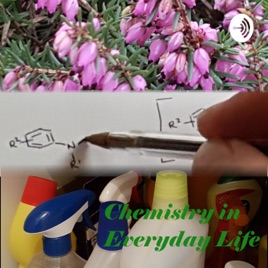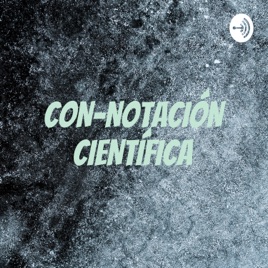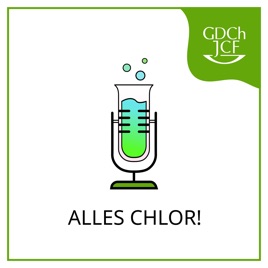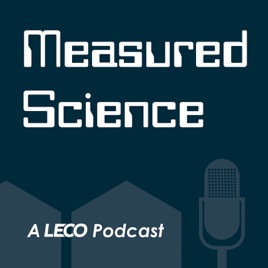
Advertise on podcast: Chemistry in Everyday Life
Rating
5 from
Country
This podcast has
41 episodes
Language
Publisher
Explicit
No
Date created
2020/04/15
Average duration
19 min.
Release period
22 days
Description
Chemistry in Everyday Life is a podcast that aims to explain the fascinating world of chemistry to lay people with the help of common examples encountered all around us.
Podcast episodes
Check latest episodes from Chemistry in Everyday Life podcast
Asphalt - Chemie im Straßenbau
2022/01/05
Roads are one of the defining features of modern civilizations, believe it or not. To me and I think most others, the state of the roads in a country gives an idea of the level of development. It does not surprise then that chemistry features quite heavily in how we make roads.
A request from a listener, I explore in this episode the chemistry of bitumen and the physical properties needed for a good road.
This podcast is still not reactivated, but if you have a topic that you are interested in and do not mind an extended waiting time until I get round to it, drop me a mail under chem.podcast@gmail.com .
Sources
Background Information
Polymer Chemistry, An Introduction Malcolm P. Stevens, 3rd Ed. Oxford University Press, 1999; ISBN 978-0-19-512444-6 pp. 70ff & 87ff
https://en.wikipedia.org/wiki/Asphalt
https://de.wikipedia.org/wiki/Asphalt_(Geologie)
https://en.wikipedia.org/wiki/Asphalt_concrete
https://de.wikipedia.org/wiki/Asphalt
Polymer-modified Bitumen
https://www.researchgate.net/publication/262691923_Polymer_modified_bitumen_Optimization_and_selection
http://oxidizedbitumen.org/primer-bitumen/asphalt-polymer
https://www.corrosionpedia.com/definition/3215/polymer-modified-bitumen-pmb
https://globecore.com/bitumen-modification-polymers/
https://www.sciencedirect.com/science/article/pii/B9780857090485500018
https://bitumen.globecore.com/use-polymer-bitumen-binders-road-construction
Glass Transition Temperature
https://en.wikipedia.org/wiki/Glass_transition
https://de.wikipedia.org/wiki/Glas%C3%BCbergangstemperatur
Grundlagenvideo Asphalt-Straßenbau
https://www.youtube.com/watch?v=PeMeZy9ayV8
Intro Video to Bitumen
https://www.youtube.com/watch?v=Q39vKdNuJKQ
How much bitumen per kilometer of road
https://saharabizz.com/how-much-bitumen-used-in-road-construction-per-kilometre/
Styrene-Butadiene-Styrene Polymer in Asphalt
https://www.sciencedirect.com/topics/engineering/styrene-butadiene-styrene
Video: Bier während der Arbeit? Welche Klischees über Straßenbauarbeiter stimmen? | Galileo | ProSieben
2:59 „Alle 15 Jahre muss ein Straßenbelag erneuert werden…“
https://www.youtube.com/watch?v=RpQ7ohsN2pg
more
Last episode of Chemistry in Everyday Life: Cyanide Poisoning
2021/09/28
It takes a little bit more than 100mg of cyanide to kill a 75 kg human being. A little more than 100mg and the unfortunate victim will show the telltale signs of “bluish tones of oxygen deprivation mottle the skin.“
Cyanide Poisoning is as old as the usage of chemical compounds containing cyanide and this episode looks at the chemistry that happens in the body during a poisoning.
“This will be the last episode of Chemistry in Everyday Life for now. It was a huge amount of fun, but for the usual reasons, I have to suspend this beloved hobby project for an indefinite period of time. I would like to thank you all for listening. I enjoyed this experience immensely and I am proud of what I achieved. Take care everyone 😊”
The Podcast will remain online for the time being, but I will not add any new content.
Sources
Historical Background
· The Poisoner’s Handbook: Murder and the Birth of Forensic Medicine in Jazz Age New York, Chapter 3, 2010, D. Blum ISBN: 978-1594202438
Cyanide Poisoning and Cyanide Chemistry
· https://en.wikipedia.org/wiki/Cyanide_poisoning
· https://www.thoughtco.com/overview-of-cyanide-poison-609287
· https://en.wikipedia.org/wiki/Cyanide
· https://en.wikipedia.org/wiki/Histotoxic_hypoxia
Oxidative Phosphorylation and Cytochrome C Oxidase
· https://en.wikipedia.org/wiki/Cytochrome_c_oxidase#Inhibition
· https://en.wikipedia.org/wiki/Oxidative_phosphorylation
· https://en.wikipedia.org/wiki/Electron_transport_chain
Mitochondria
· https://en.wikipedia.org/wiki/Mitochondrion
· https://www.thoughtco.com/mitochondria-defined-373367
Medical Treatment for Cyanide Poisoning
· https://www.drugs.com/cg/cyanide-poisoning.html
· https://www.healthline.com/health/cyanide-poisoning
more
Why can we digest starch, but not cellulose?
2021/09/12
Both starch and cellulose are made of glucose, one of the main sources of energy for the human body. Yet... we can digest starch that we find in things like potatoes or flour, but we cannot digest cellulose, a compound that is found in virtually every plant... Why?!?
If you would like to share feedback or have a suggestion for a topic, I can now be reached on twitter under @ChemistryinEve1 or you can leave a comment on my website https://chemistryineverydaylife574446112.wordpress.com/. Alternatively, you can send an email to chem.podcast@gmail.com.
Sources
Chemistry of glucose linkages
· https://en.wikipedia.org/wiki/Glycosidic_bond
· https://en.wikipedia.org/wiki/Anomer
· https://en.wikipedia.org/wiki/Polysaccharide
Glycogen & Starch metabolism
· https://findanyanswer.com/can-glycogen-be-digested-by-humans
· Biochemistryby J. M. Berg et al. 9th Ed. 2019 ISBN 978-1-319-11465-7; p. 679ff
· https://en.wikipedia.org/wiki/Starch
· https://en.wikipedia.org/wiki/Glycogen
· https://en.wikipedia.org/wiki/Glycogenolysis
Cellulose digestion
· https://en.wikipedia.org/wiki/Ruminant#Digestive_system_of_ruminants
· https://en.wikipedia.org/wiki/Rumen
· https://en.wikipedia.org/wiki/Cellulose
· https://en.wikipedia.org/wiki/Cellulase
· https://en.wikipedia.org/wiki/Hindgut_fermentation
more
Summer Re-runs: Prove It! How do we know what chemicals we have? - Part 2: Analysis
2021/08/29
Dear Chemistry in Everyday Life Fans, I am off this month and as a consequence, we are looking back on past episodes over the summer. Today’s re-run is one of the first episodes that I ever recorded by the name of “Protection from the Sun Pt. 1 – The Ozone Layer”.
I hope you all enjoy your summer. Stay safe and take care :)
more
Summer Re-runs: Protection from the Sun Pt. 1 - The Ozone Layer
2021/08/15
Dear Chemistry in Everyday Life Fans, I am off this month and as a consequence, we are looking back on past episodes over the summer. Today’s re-run is one of the first episodes that I ever recorded by the name of “Protection from the Sun Pt. 1 – The Ozone Layer”.
The survey is still open and you can still submit an answer under https://forms.gle/LihJiny4jncB6h2A6. Let me know what episodes you like best and we shall replay them over the course of the summer.
I hope you all enjoy your summer. Stay safe and take care :)
more
Summer Re-runs: Breathe in, Breathe Out - Oxygen Transfer in the Blood
2021/08/01
Dear Chemistry in Everyday Life Fans, I am off this month and as a consequence, we are looking back on past episodes over the summer. I asked you what is your favourite episode and the result said it was the episode "Breathe in, Breathe Out - Oxygen Transfer in the Blood".
The survey is still open and you can still submit an answer under https://forms.gle/LihJiny4jncB6h2A6 . Let me know what episodes you like best and we shall replay them over the course of the summer.
I hope you all enjoy your summer. Stay safe and take care :)
more
You look radiant today - Radiotracers and Imaging
2021/07/16
PLEASE NOTE: During the month of August, I will repeat some previous episodes. If you want to influence which episodes will be played, you can click on the following link to part in a 1-question survey. Thanks! https://forms.gle/LihJiny4jncB6h2A6
How can you trace a molecule inside the body? How do you know, how a compound inside the body is metabolised? We will explore these questions in this episode.
If you would like to share feedback or have a suggestion for a topic, I can now be reached on twitter under @ChemistryinEve1 or you can leave a comment on my website https://chemistryineverydaylife574446112.wordpress.com/. Alternatively, you can send an email to chem.podcast@gmail.com.
more
Prove It! How do we know what chemicals we have? - Part 2: Analysis
2021/07/04
Have you ever wondered how all these scientists come up with their findings in forensics, environmental science, pharmaceuticals, … cooking, cosmetics, and in soooo many more? Chemical purification and analysis lies at the heart of this question and I give you hereby my attempt at answering it. This is Part 2 of this 2-Part series looking at analysis.
If you would like to share feedback or have a suggestion for a topic, I can now be reached on twitter under @ChemistryinEve1or you can leave a comment on my website https://chemistryineverydaylife574446112.wordpress.com/. Alternatively, you can send an email to chem.podcast@gmail.com.
Sources
Background knowledge
· https://en.wikipedia.org/wiki/Analytical_chemistry
Areas of application for analytical chemistry
· https://en.wikipedia.org/wiki/Blood_test
· https://en.wikipedia.org/wiki/Forensic_chemistry
· https://en.wikipedia.org/wiki/Forensic_science
· https://en.wikipedia.org/wiki/Environmental_chemistry
· https://en.wikipedia.org/wiki/Environmental_analysis
· https://en.wikipedia.org/wiki/Instrumental_chemistry
· https://en.wikipedia.org/wiki/Clinical_chemistry
· https://en.wikipedia.org/wiki/Bioanalysis
· https://en.wikipedia.org/wiki/List_of_materials_analysis_methods
Qualitative Analysis
· https://en.wikipedia.org/wiki/Chemical_test
· https://en.wikipedia.org/wiki/Flame_test
Acid Test (Gold)
· https://en.wikipedia.org/wiki/Acid_test_(gold)
· https://www.youtube.com/watch?v=2koNEe6Kdyc
Iodine Starch test
· https://www.youtube.com/watch?v=72zKnccyH-w
· https://en.wikipedia.org/wiki/Iodine%E2%80%93starch_test
Quantitative Analysis
· https://en.wikipedia.org/wiki/Quantitative_analysis_(chemistry)
· https://en.wikipedia.org/wiki/Gravimetric_analysis
· https://en.wikipedia.org/wiki/Titration
Instrumental Analysis
· https://en.wikipedia.org/wiki/Spectroscopy
· https://en.wikipedia.org/wiki/Mass_spectrometry
more
Prove It! How do we know what chemicals we have? - Part 1: Purification Techniques
2021/06/20
Have you ever wondered how all these scientists come up with their findings in forensics, environmental science, pharmaceuticals, … cooking, cosmetics, and in soooo many more? Chemical purification and analysis lies at the heart of this question and I give you hereby my attempt at answering it. This is Part 1 of this 2-Part series looking at purification techniques.
If you would like to share feedback or have a suggestion for a topic, I can now be reached on twitter under @ChemistryinEve1or you can leave a comment on my website https://chemistryineverydaylife574446112.wordpress.com/. Alternatively, you can send an email to chem.podcast@gmail.com.
Sources
Purification Techniques
· https://en.wikipedia.org/wiki/List_of_purification_methods_in_chemistry
· Advanced Practical Organic Chemistry 2nd Edition, J. Leonard, B. Lygo, G. Procter, 1998, ISBN 0-7487-4071-6
DDT
· https://en.wikipedia.org/wiki/DDT
Microplastics
· https://www.nationalgeographic.org/encyclopedia/microplastics/
Centrifugation
· https://www.youtube.com/watch?v=KEXWd3_fM94
· https://www.youtube.com/watch?v=XAhBzUosvsU
Freeze-drying
· https://en.wikipedia.org/wiki/Freeze-drying
more
Absorbing Fats - Bile in Action
2021/06/06
After talking about red blood cells two episodes ago, this episode looks at a different bodily fluid. One that helps in the digestion of fats. We are talking about bile. A liquid associated with bad experiences, but is essential to our survival.
If you would like to share feedback or have a suggestion for a topic, I can now be reached on twitter under @ChemistryinEve1or you can leave a comment on my website https://chemistryineverydaylife574446112.wordpress.com/. Alternatively, you can send an email to chem.podcast@gmail.com.
Sources
Bile
· https://en.wikipedia.org/wiki/Bile
· https://de.wikipedia.org/wiki/Galle
Anatomy
· https://en.wikipedia.org/wiki/Liver
· https://en.wikipedia.org/wiki/Gallbladder
· https://en.wikipedia.org/wiki/Duodenum
· https://en.wikipedia.org/wiki/Pancreas
Bile Composition
· https://de.wikipedia.org/wiki/Gallens%C3%A4uren
· https://en.wikipedia.org/wiki/Bile_acid
· https://de.wikipedia.org/wiki/Alkalische_Phosphatase
· https://en.wikipedia.org/wiki/Alkaline_phosphatase
· https://de.wikipedia.org/wiki/Lecithine
· https://en.wikipedia.org/wiki/Lecithin
· https://en.wikipedia.org/wiki/Lipase
Mixing oil and water
· https://en.wikipedia.org/wiki/Emulsion
· https://www.youtube.com/watch?v=93sPsWtlDB8
· https://www.youtube.com/watch?v=mBvKar6t1LY
· https://www.youtube.com/watch?v=bC_czAL24zY
· https://en.wikipedia.org/wiki/Micelle
Fats
· https://en.wikipedia.org/wiki/Fat
· https://en.wikipedia.org/wiki/Triglyceride
· https://en.wikipedia.org/wiki/Monoglyceride
· https://en.wikipedia.org/wiki/Phospholipid
Human pancreatic lipase
· https://en.wikipedia.org/wiki/Pancreatic_lipase_family#Human_pancreatic_lipase
How fats are used by the body
· https://en.wikipedia.org/wiki/Lipid_metabolism
· https://en.wikipedia.org/wiki/Fatty_acid_metabolism
more
Life-saving explosions - Airbags
2021/05/23
In this episode I confront the horrible memory of my one and only bad car crash. I only remember fragments, but the airbag was a big part of the memory. If you want to know how explosions save lives everyday on the road, then tune in.
If you would like to share feedback or have a suggestion for a topic, I can now be reached on twitter under @ChemistryinEve1or you can leave a comment on my website https://chemistryineverydaylife574446112.wordpress.com/. Alternatively, you can send an email to chem.podcast@gmail.com.
Sources
Airbag Technology
· https://en.wikipedia.org/wiki/Airbag
· https://de.wikipedia.org/wiki/Airbag
· https://en.wikipedia.org/wiki/Electric_match
· https://en.wikipedia.org/wiki/Gas_generator
Chemicals used in Airbags
· https://en.wikipedia.org/wiki/Sodium_azide
· https://en.wikipedia.org/wiki/Nitroguanidine
· https://de.wikipedia.org/wiki/Nitroguanidin
· https://en.wikipedia.org/wiki/Guanidine_nitrate
· https://de.wikipedia.org/wiki/Guanidiniumnitrat
Density, Avogadro’s constant and the Mole
· https://en.wikipedia.org/wiki/Density
· https://de.wikipedia.org/wiki/Dichte
· https://en.wikipedia.org/wiki/Avogadro_constant
· https://de.wikipedia.org/wiki/Avogadro-Konstante
· https://en.wikipedia.org/wiki/Mole_(unit)
· https://de.wikipedia.org/wiki/Mol
Further Reading on Airbags
· https://www.explainthatstuff.com/airbags.html
· http://www.chemistry.wustl.edu/~edudev/LabTutorials/CourseTutorials/bb/Airbags/151_T5_07_airbags.pdf
· https://www.chemie-azubi.de/detailansicht/news/klugscheisser-wissen-wie-funktioniert-ein-airbag/
Fun video on Airbag demonstration
· https://www.youtube.com/watch?v=vc4I4hvy_hM
· General Chemistry Ebbing p. 27ff, 190-197
Side Note: Seemingly a connection to rocket fuel
· https://de.wikipedia.org/wiki/Raketentreibstoff
· https://en.wikipedia.org/wiki/Rocket_propellant
more
Breathe in, Breathe Out - Oxygen Transfer in the Blood
2021/05/09
Oxygen in, Carbon Dioxide out. We learn this basic paradigm about breathing from a very early age on. But how does it work? From a chemical viewpoint this is a lot of fun! So let’s look into it 😊
If you would like to share feedback or have a suggestion for a topic, I can now be reached on twitter under @ChemistryinEve1or you can leave a comment on my website https://chemistryineverydaylife574446112.wordpress.com/. Alternatively, you can send an email to chem.podcast@gmail.com.
Sources
Blood, Red Blood Cells and Haemoglobin
· https://en.wikipedia.org/wiki/Blood
· https://en.wikipedia.org/wiki/Red_blood_cell
· https://de.wikipedia.org/wiki/Erythrozyt
· https://en.wikipedia.org/wiki/Hemoglobin
· https://en.wikipedia.org/wiki/Heme
· https://de.wikipedia.org/wiki/H%C3%A4moglobin
· https://de.wikipedia.org/wiki/H%C3%A4me_(Stoffgruppe)
· https://en.wikipedia.org/wiki/Porphyrin
The Human Respiratory System
· https://en.wikipedia.org/wiki/Respiratory_system
The Bohr Effect and Haldane Effect
· https://en.wikipedia.org/wiki/Haldane_effect
· https://en.wikipedia.org/wiki/Bohr_effect
· https://en.wikipedia.org/wiki/Carbaminohemoglobin
Khan’s academy explaining Bohr effect and Haldane’s effect
· https://www.youtube.com/watch?v=dHi9ctwDUnc
Coordination Chemistry
· https://en.wikipedia.org/wiki/Coordination_complex
· https://de.wikipedia.org/wiki/Komplexchemie
· https://en.wikipedia.org/wiki/Coordinate_covalent_bond
· https://pediaa.com/difference-between-covalent-and-coordinate-bond/
· Inorganic Chemistry by C. E. Housecroft and A. G. Sharpe 1st Edition 2001 ISBN 0582-31080-6
Smokers and Carbon Monoxide
· https://en.wikipedia.org/wiki/Carbon_monoxide
· https://en.wikipedia.org/wiki/Carbon_monoxide_poisoning
· https://en.wikipedia.org/wiki/Carboxyhemoglobin
· https://de.wikipedia.org/wiki/Ligand
· https://en.wikipedia.org/wiki/Denticity
Sickle Cell Disease
· https://en.wikipedia.org/wiki/Sickle_cell_disease
more
Podcast sponsorship advertising
Start advertising on Chemistry in Everyday Life & sponsor relevant audience podcasts
You may also like these chemistry Podcasts

0
0
95
OZONE PODCAST
OZONE Club/USTHB

0
0
13
Advanced Materials Solutions
DSM Subject Matter Experts, Michael Kriek, Candace Roulo

4.5
2
24
ELEMENTary – a BASF podcast
Mona Riemenschneider, Klara Truong und Lucas Wippert

5
1
5
ماري كوري (دانشمند)
Sana Motamednia

0
0
16
Con Ciencia
Jorge Alberto Rosales Maldonado

0
0
55
Alles Chlor!
JungChemikerForum

0
0
65
ANak BawaNg
Yoka Roy Situmorang

5
2
17
Chemistry is everywhere
ton van oeffel

5
1
13
EYCN Podcast - Chemistry To Your Ears
European Young Chemists' Network

5
2
7
Measured Science
LECO Corporation



